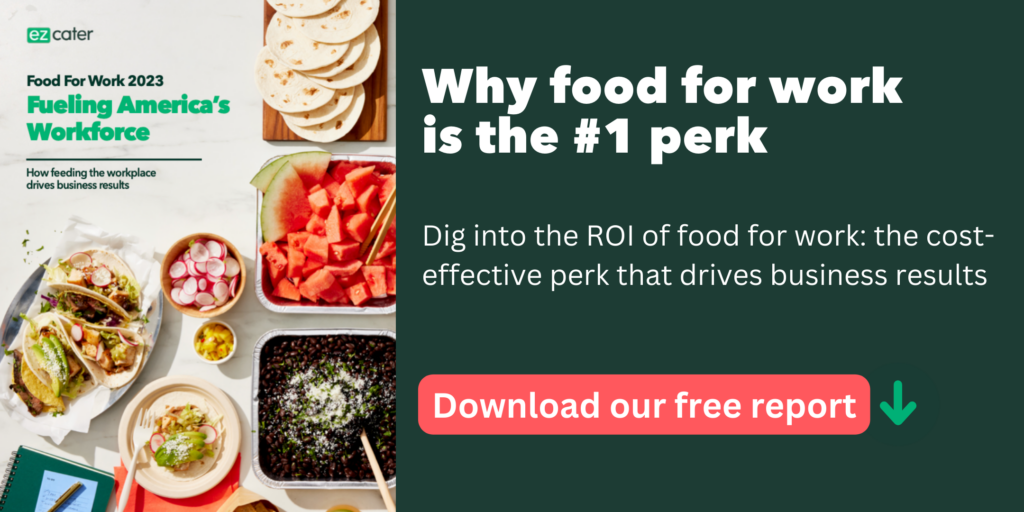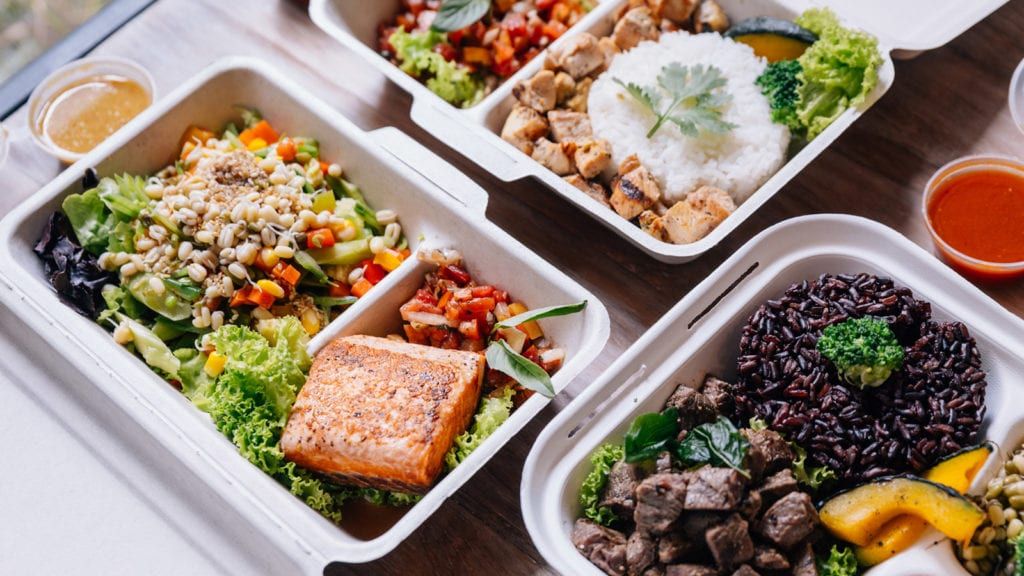Great Perks at Work: How to Go Beyond Traditional Benefits
- Rita Cunha
- •
- 3 Min Read
- •
Are you offering workers the benefits they want? Sure, you may offer healthcare coverage, retirement plans, and paid time off. But employees today expect more from their employers, and only 61% say they’re happy with their work perks.
It’s time for a benefits package revolution — and non-traditional perks could be the solution. Coming up with unique employee benefits that fit your company culture and workers’ needs is well worth the effort. Good perks boost satisfaction, productivity, and employee retention. They also make your organization stand out and attract top talent in a competitive market.
If your head is spinning doing the math to figure out how much that will all cost, we have good news. Outside-the-box perks can be affordable. Some are virtually free. From subsidized meals to doggy daycare and learning incentives, there are so many options your organization should explore, especially if you want to attract specific generations of employees.

Let’s dig deeper to find out how creativity (not cost!) can give your company a competitive edge when it comes to perks for work.
What’s the most important perk for every generation?
Boomers, Gen X, Millennials, and Gen Z all value healthcare, retirement plans, and PTO. But when it comes to non-traditional benefits, different generations want different things.
Boomers
Born between 1946 and 1964, Boomers are the oldest generation still in the workforce. While many are planning their upcoming retirement, many more are happily working — especially if they’re given flexible work schedules, which 79% of Baby Boomer professionals say they want.
Generation X
Gen X makes up 40% of the caregiving population, which means they are often tasked with looking after adult children, young grandchildren, and elderly parents. It’s a lot of responsibility and can be tiring. Employers who want to keep these experienced workers happy and engaged at work can offer flexible work options and flexible paid time off (like “grand-ternity leave” policies).
Millennials
Millennial employees are no longer the youngest generation at work. They are slowly but surely buying homes, and many are having children, even if at a later age than previous generations. Like Boomers and Gen Xers, flexible work schedule continues to be the top priority for Millennials. But unlike other groups of employees, Millennials are the generation that cares the most about having access to mental health resources.
Generation Z
Gen Zers are the youngest members of today’s workforce. They’re just starting their professional lives, so it makes sense that they’re the most likely to say they prioritize having access to learning materials and professional development. This is so important to Gen Zers that 50% of new graduates say they’re more likely to apply to work at a company that provides learning stipends.

Tailoring incentives to each generation
We’re not sharing this data because it’s fun trivia (although it is interesting!). Understanding the pain points of each generation — and what matters most to them — could set your organization miles ahead of the competition.
You could adapt your company’s existing incentive policies to specifically target certain generations. For example, to retain Gen X workers, your organization could explore adding caregiving leave to the PTO policy to ease the burden on their plate.
11 unique employee perks to try in your workplace
Traditional benefits only go so far, especially when you consider that all companies are offering these same perks. Why should employees join or stay with your organization? These innovative employee perks could give you the competitive edge you need.
1. Free catered lunches

57% of employees rank free food as their top work perk. Turns out, easing the hunger pangs and breaking up the day with a delicious lunch is what employees want, especially Millennials and Gen Z. It even ranks higher than flexible work, wellness benefits, education stipends, profit sharing, and volunteering perks.
Don’t just stick to once-in-a-blue-moon pizza parties. Try ordering a buffet-style spread from a favorite local restaurant or opt for individually packaged sandwiches once a week (or more!).

2. Breakfast and barista

It’s not just catered lunches that are in high demand. Breakfast is a great time to treat and energize your employees, too. Try offering pastries from a local bakery or a build-your-own parfait station with fresh fruit. Having a barista on site, even if for just an hour or two, also lets employees switch up their plain cup of joe with a cappuccino.
Want to maximize your returns on this investment? Use these free morning meals as a recruiting tool.
3. Free fitness classes

Gym memberships and fitness classes are popular perks. If your workplace has the space, you could even have instructors come over and lead a pilates, yoga, or dance class. It would be a good team-building exercise, too.
4. Mental health offerings

Keeping employees healthy also means offering mental health support. Consider giving your crew access to guided meditation apps, telehealth counseling, and mental health days off. It means a lot to Millennials and Gen Z.
5. Monthly birthday celebrations

Another way to show appreciation for an employee is to host a birthday celebration. It could be as simple as birthday donuts in the morning or as elaborate as a catered lunch they pick out to share with everyone.
As a bonus, free food will also get hybrid teams back into the office with less friction. Try timing your important in-office days with birthdays to double up on the perks.
6. Subsidized unplugging time

Want to go even further to boost morale? Show appreciation for your teams by rewarding them with meaningful experiences. For example, you could pay for pottery classes, spa days, or National Park passes. It encourages hard-working employees to take a break, which is good for their mental health and work performance.
7. Free pet care

Plenty of companies offer subsidized and onsite daycare services, and that’s great! But how many offer doggy daycare, dog walking, or free pet grooming? Not nearly as many, so the ones that do stand out. This perk is much more affordable than full-fledged child daycare services but it matters a lot to pet owners: 97% of pet owners see their pets as part of the family. Offering services that make their four-legged companions happy and healthy goes a long way in retaining and attracting talent — especially Millennials, who make up the largest share of pet owners.
8. House chore assist

There are other ways to support employees outside of work. Here’s an innovative idea: help them with house chores. For example, you could hire a cleaning crew to tidy up their place, have a laundry service onsite at work, or get meal kits delivered to their home weekly. It seems trivial, but think of the time and mental load your employees can save. Unburdened by chores, they can bring their well-rested self to work.
9. Subsidized commute

Need to boost office attendance? Consider helping your employees pay for transportation costs. It eases the financial brunt of the commute. Set a monthly allowance for gas, public transit cards, or bike-sharing memberships.
10. Music streaming subscription

If sharing the cost of the commute isn’t in the budget, you can at least make it more fun. Premium music streaming subscriptions aren’t expensive and employees (especially Millennials and Gen Z) appreciate them. Who likes being interrupted by ads, anyway?
11. Education stipend

Remember how we mentioned earlier that Gen Z cares a lot about advancing their education at work? Offering education stipends to be spent on online courses, community college classes, books, and professional certifications is a terrific way of attracting and retaining these young professionals. It’s an innovative employee benefit that pays off big time: the knowledge they acquire will improve their work output and productivity, which translates to business gains for your organization.
Great perks at work can be easy to implement
You don’t have to implement all these innovative employee perks. Try picking perks for work that offer the most value to your workers while sticking to your yearly budget. It’s not as complicated as it may seem, especially if you go with food perks. Something as simple as two catered meals a week has a great impact — and HR professionals agree. They’re 20% more likely to say subsidized food provides the best ROI compared to other perks.
The best part is that you don’t have to do it alone. From concierge ordering to employee meals on repeat, ezCater has the tools to help you handle any corporate catering challenge.








